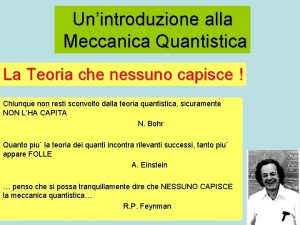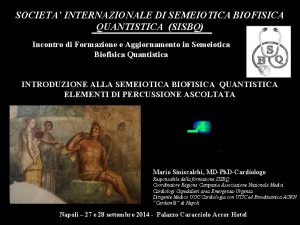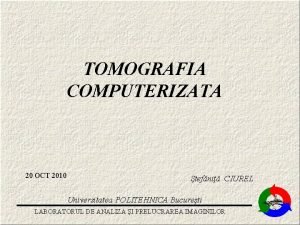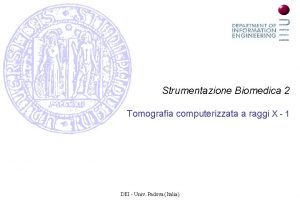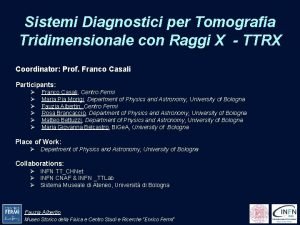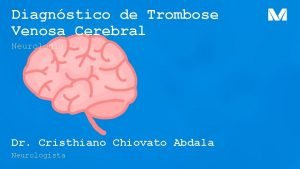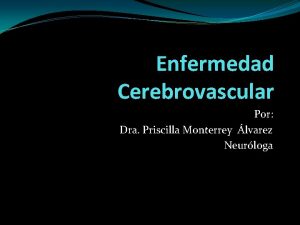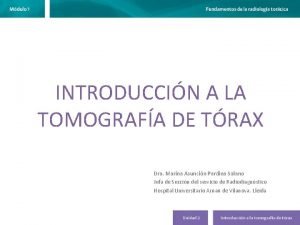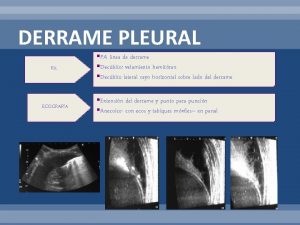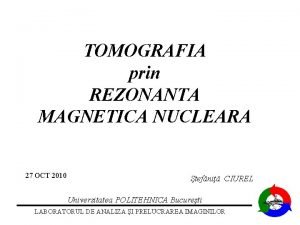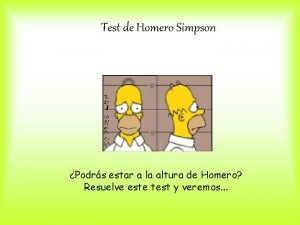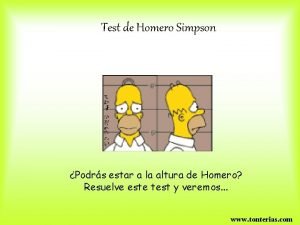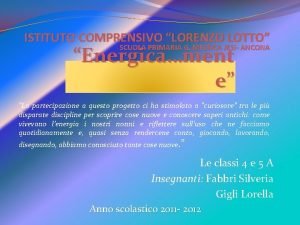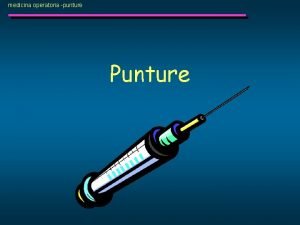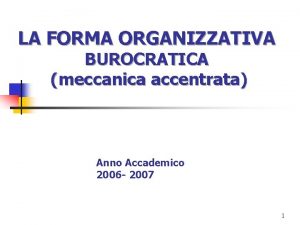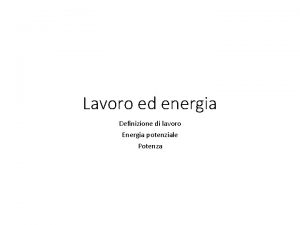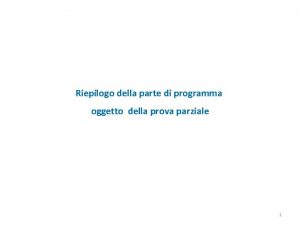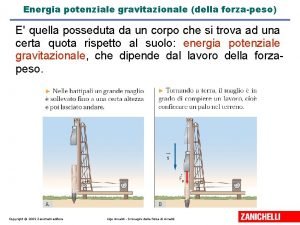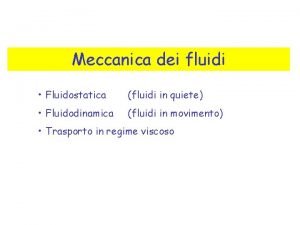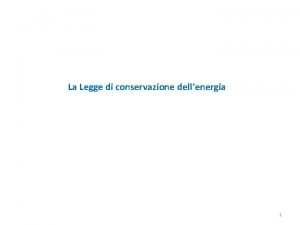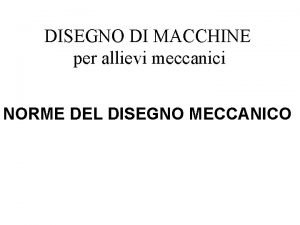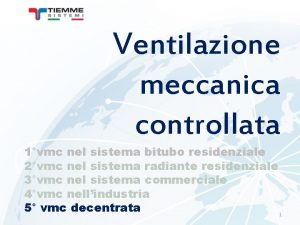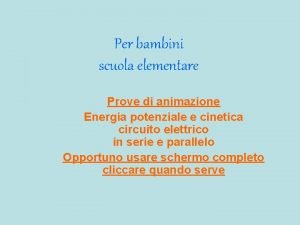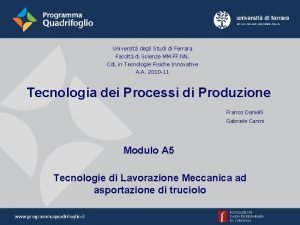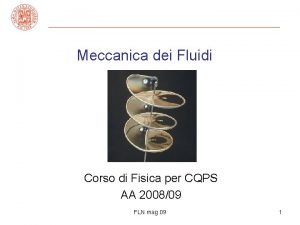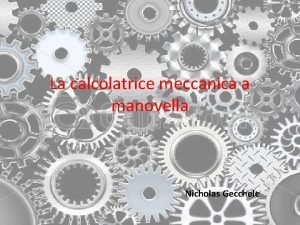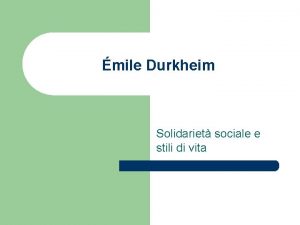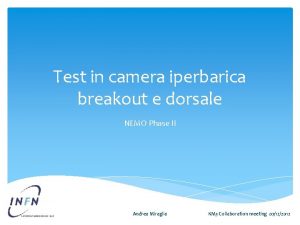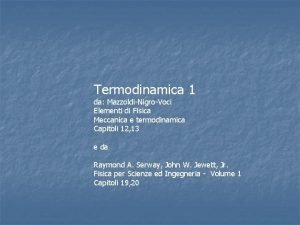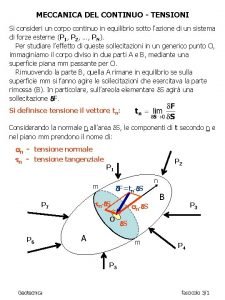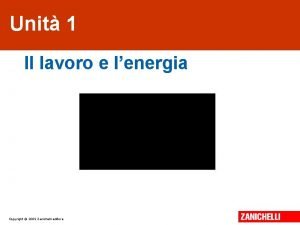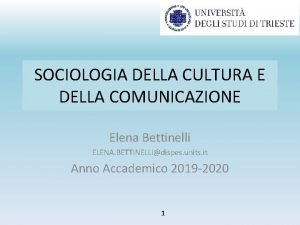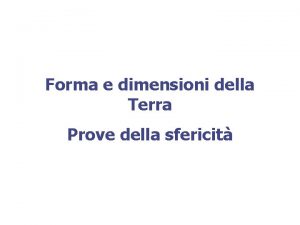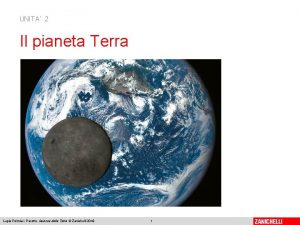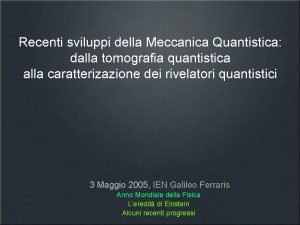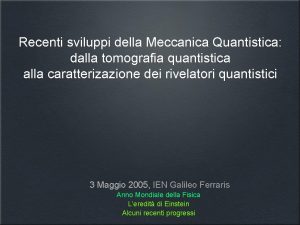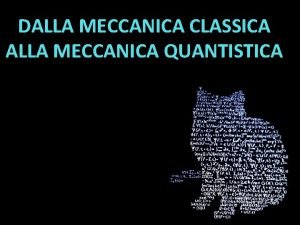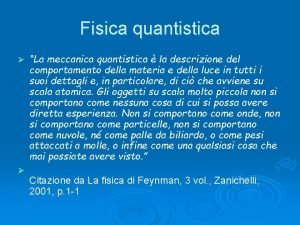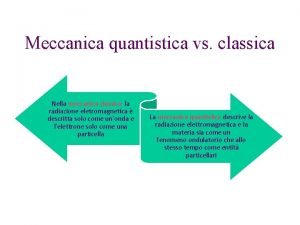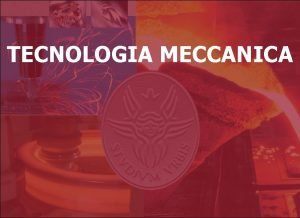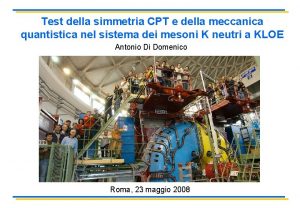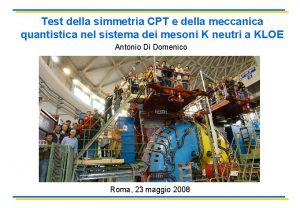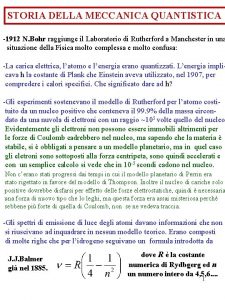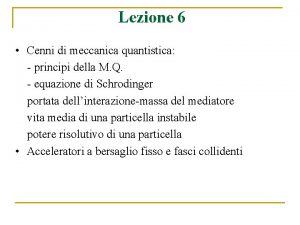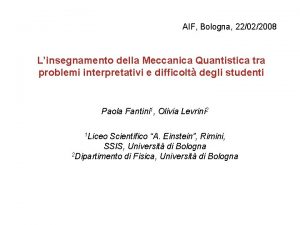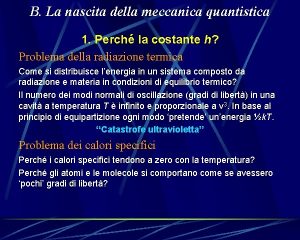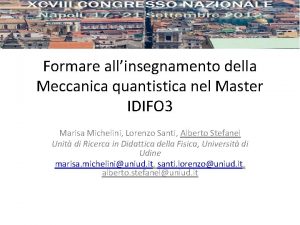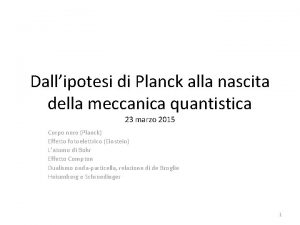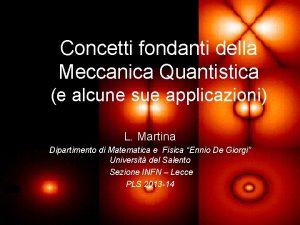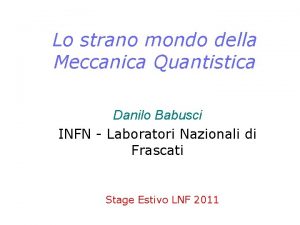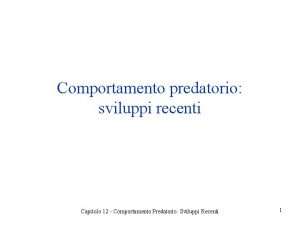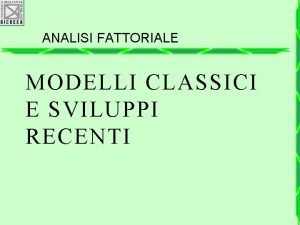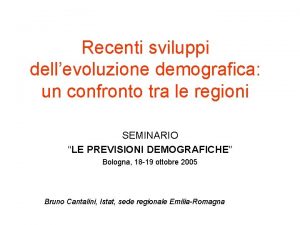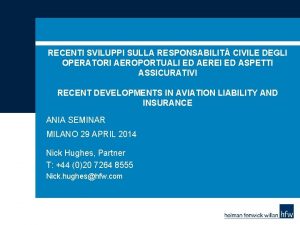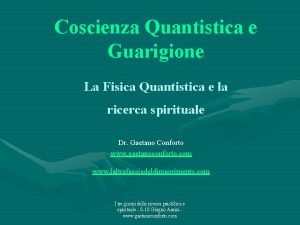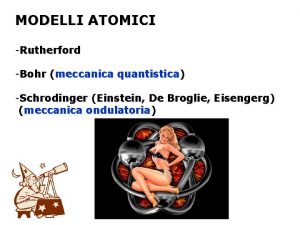Recenti sviluppi della Meccanica Quantistica dalla tomografia quantistica



![Pre-history: “measuring” the state Wolfgang Pauli [1958]: The mathematical problem, as to whether for Pre-history: “measuring” the state Wolfgang Pauli [1958]: The mathematical problem, as to whether for](https://slidetodoc.com/presentation_image_h/10337ed7247020971e761d216748b5c2/image-4.jpg)
![Pre-history: “measuring” the state Eugene Paul Wigner [1983]: There is no way to determine Pre-history: “measuring” the state Eugene Paul Wigner [1983]: There is no way to determine](https://slidetodoc.com/presentation_image_h/10337ed7247020971e761d216748b5c2/image-5.jpg)
![Pre-history: “measuring” the state Bernard d’Espagnat [1976]: The question of determining which operators correspond Pre-history: “measuring” the state Bernard d’Espagnat [1976]: The question of determining which operators correspond](https://slidetodoc.com/presentation_image_h/10337ed7247020971e761d216748b5c2/image-6.jpg)










































- Slides: 48

Recenti sviluppi della Meccanica Quantistica: dalla tomografia quantistica alla caratterizazione dei rivelatori quantistici 3 Maggio 2005, IEN Galileo Ferraris Anno Mondiale della Fisica L’eredità di Einstein Alcuni recenti progressi

“Measuring” the quantum state

The quantum state • It contains the whole information in-principle available on the system. • Quantum complementarity forbids to obtain all the possible information from the same measurement: if we are measuring the wave aspects of the system, we are missing out on all its particle aspects. • Thus, to recover the state, we need to perform a set of incompatible measures on an ensemble of equally prepared systems.
![Prehistory measuring the state Wolfgang Pauli 1958 The mathematical problem as to whether for Pre-history: “measuring” the state Wolfgang Pauli [1958]: The mathematical problem, as to whether for](https://slidetodoc.com/presentation_image_h/10337ed7247020971e761d216748b5c2/image-4.jpg)
Pre-history: “measuring” the state Wolfgang Pauli [1958]: The mathematical problem, as to whether for given functions W(q) and W(p) the wave function ψ, if such function exists is always uniquely determined, has still not been investigated in all its generality.
![Prehistory measuring the state Eugene Paul Wigner 1983 There is no way to determine Pre-history: “measuring” the state Eugene Paul Wigner [1983]: There is no way to determine](https://slidetodoc.com/presentation_image_h/10337ed7247020971e761d216748b5c2/image-5.jpg)
Pre-history: “measuring” the state Eugene Paul Wigner [1983]: There is no way to determine what the wave function (or state vector) of a system is— if arbitrarily given, there is no way to “measure” its wave function. Clearly, such a measurement would have to result in a function of several variables, not in a relatively small set of numbers. . . In order to verify the [quantum] theory in its generality, at least a succession of two measurements are needed. There is in general no way to determine the original state of the system, but having produced a definite state by a first measurement, the probabilities of the outcomes of a second measurement are then given by theory.
![Prehistory measuring the state Bernard dEspagnat 1976 The question of determining which operators correspond Pre-history: “measuring” the state Bernard d’Espagnat [1976]: The question of determining which operators correspond](https://slidetodoc.com/presentation_image_h/10337ed7247020971e761d216748b5c2/image-6.jpg)
Pre-history: “measuring” the state Bernard d’Espagnat [1976]: The question of determining which operators correspond to observables and which do not is a very difficult one. At the present time, no satisfactory answer appears to be known. Neverthless, it is interesting to investigate the relationship of this question to another, similar one: “What are the systems whose density matrices are measurable? ” Should we, for instance, say that if a given type of systems corresponding to a given Hilbert space has a measurable density matrix, then all the Hermitean operators defined on that space are measurable? And is the reverse proposition true? What do we mean when we say that the density matrix corresponding to a given type of system is measurable? Let an ensemble E of a sufficiently large number of this type be given. Let us first separate it into subensembles Eλ, the elements of which are chosen at random in E. If from the results of appropriate measurements on the Eλ, we can derive the value of every element of the matrix ρ that describes E in some fixed representation, we say that ρ is measurable.

“Measuring” the quantum state of a syngle system • O. Alter, and Y. Yamamoto, Inhibition of the Measurement of the Wave Function of a Single Quantum System in Repeated Weak Quantum Nondemolition Measurements, Phys. Rev. Lett. 74 4106 (1995). • Y. Aharonov, J. Anandan, L. Vaidman, Meaning of the Wave Function, Phys. Rev. A 47 4616 (1993); See also the Comment: W. G. Unruh, Reality and Measurement of the Wave Function, Phys. Rev. A 50 882 (1994). • M. Ueda and M. Kitagawa, Phys. Rev. Lett. Reversibility in Quantum Measurement Processes, 68 3424 (1992). • A. Imamoglu, Logical Reversibility in Quantum-Nondemolition Measurements, Phys. Rev. A 47 R 4577 (1993). • A. Royer, Reversible Quantum Measurements on a Spin 1/2 and Measuring the State of a Single System, Phys. Rev. Lett. 73 913 (1994); Errata, Phys. Rev. Lett. 74 1040 (1995). • G. M. D'Ariano and H. P. Yuen, On the Impossibility of Measuring the Wave Function of a Single Quantum System, Phys. Rev. Lett. 76 2832 (1996) [NO CLONING]

“Measuring” the quantum state • No cloning theorem <---> It is impossible to determine the state of a single quantum system. • To “measure the state” we need an ensemble of equally prepared identical quantum systems.

“Measuring” the quantum state • How to measure concretely the matrix elements of the quantum state? • In order to determine the density matrix, one needs to measure a “complete” set of observables, the quorum, [Fano, d’Espagnat, Royer, . . . ] • The problem remained at the level of mere speculation for many years. . . • It entered the realm of experiments only in 1994, after the experiments by Raymer’s group in the domain of Quantum Optics.

“Measuring” the quantum state • For particles, it is difficult to devise concretely measurable translational observables—other than position, momentum and energy. • Quantum optics: unique opportunity of measuring all possible linear combinations of position Q and momentum P of a harmonic oscillator, here a mode of the electromagnetic field. • Such a measurement is achieved by means of a balanced homodyne detector, which measures the quadrature of the field at any desired phase with respect to the local oscillator (LO).

Homodyne Detector

Homodyne Tomography K. Vogel, H. Risken, Phys. Rev. A 40 2847 (1989)

Homodyne Tomography

Problems with the Radon transform • The inverse Radon transform is nonanalytical • One needs a cutoff, which gives an uncontrollable bias in the matrix elements

Exact method It is possible to bypass the Radon transform and obtain the density matrix elements by simply averaging suitable functions on homodyne outcomes G. M. D'Ariano, C. Macchiavello and M. G. A. Paris, Phys. Rev. A 50 4298 (1994)

Exact method Measurement statistical errors on the density matrix elements can make them useless for the estimation of ensemble averages

Exact method Robust to noise, such as gaussian noise from loss or nonunit quantum efficiency Bound for quantum efficiency for estimation of the density matrix in the Fock basis

Exact method G. M. D'Ariano, U. Leonhardt and H. Paul, Phys. Rev. A 52 R 1801 (1995)



Exact method Multimode field: full joint multimode density matrix via random scan over LO modes G. D'Ariano, P. Kumar, M. Sacchi, Phys. Rev. A 61, 13806 (2000)

M. Vasilyev, S. -K. Choi, P. Kumar, and G. M. D'Ariano, Phys. Rev. Lett. 84 2354 (2000) Tomography of a twin beam

M. Vasilyev, S. -K. Choi, P. Kumar, and G. M. D'Ariano, Phys. Rev. Lett. 84 2354 (2000) Tomography of a twin beam Marginal distributions for the signal and idler beams

Tomography of a twin beam

Exact method: adaptive techniques 9) 199 G. M. D'Ariano and M. G. A. Paris, Phys. Rev. A 60 518 ( The estimators are not unique, and can be “adapted” to data to minimize the rms error

Max-likelihood techniques Maximize the likelihood function of data Positivity constraint via Cholesky decomposition Statistically optimally efficient! Drawbacks: exponential complexity with the number of modes; estimation of parameters of the density operator only K. Banaszek, G. M. D'Ariano, M. G. A. Paris, M. Sacchi, Phys. Rev. A 61, 010304 (2000) (rapid communication)

003) G. M. D'Ariano, L. Maccone, and M. Paini , J. Opt. B 577 (2 Angular momentum tomography

Computation and Information, G. M. D'Ariano, Scuola "E. Fermi" on Experimental Quantum 002) pag. 385. F. De Martini and C. Monroe eds. (IOS Press, Amsterdam 2 General quantum tomography

General quantum tomography The method is very powerful: 1. Any quantum system 2. Any observable 3. Many modes, or many quantum systems 4. Unbiasing noise. . . G. M. D'Ariano, Scuola "E. Fermi" on Experimental Quantum Computation and Information, F. De Martini and C. Monroe eds. (IOS Press, Amsterdam 2002) pag. 385.

Pauli Tomography

Tomography of quantum operation of a device

Tomography of quantum operation of a device G. M. D'Ariano, and P. Lo Presti, Phys. Rev. Lett. 86 4195 (2001)

Tomography of quantum operation of a device Fork scheme Twin beam

Tomography of quantum operation of a device F. De Martini, M. D'Ariano, A. Mazzei, and M. Ricci, Phys. Rev. A 87 062307 (2003)

Tomography of quantum operation of a device F. De Martini, M. D'Ariano, A. Mazzei, and M. Ricci, Phys. Rev. A 87 062307 (2003)

Tomography of quantum operation of a device Faithful states • Is it possible to make a tomography of a quantum operation using entangled mixed states, or even separable states? • Answer: yes! as long as the state is faithful.

Faithful states (2003) M. D'Ariano and P. Lo Presti, Phys. Rev. Lett. 91 047902 -1 Tomography of quantum operation of a device

(2003) M. D'Ariano and P. Lo Presti, Phys. Rev. Lett. 91 047902 -1 Tomography of quantum operation of a device

(2003) M. D'Ariano and P. Lo Presti, Phys. Rev. Lett. 91 047902 -1 Tomography of quantum operation of a device

Quantum Calibration We can perform a complete quantum calibration of a measuring apparatus experimentally, without knowing its functioning!

Quantum Calibration How we describe a measuring apparatus?

G. M. D'Ariano, P. Lo Presti, and L. Maccone, Phys. Rev. Lett. 93 250407 (2004) Quantum Calibration

G. M. D'Ariano, P. Lo Presti, and L. Maccone, Phys. Rev. Lett. 93 250407 (2004) Quantum calibration of a photocounter

G. M. D'Ariano, P. Lo Presti, and L. Maccone, Phys. Rev. Lett. 93 250407 (2004) Quantum calibration of a photocounter

Quantum tomography for imaging

Conclusions • Quantum tomography is a method to measure experimentally the quantum state, or any ensemble average. • There is a setup for any quantum system. • Robust to noise. • Statistically efficient. • Can be used for fully calibrating devices and measuring apparatuses. Robust to input state. • Maybe useful also for ACT.


THE END
 Meccanica quantistica riassunto
Meccanica quantistica riassunto Sisbq
Sisbq Pozitrónová emisná tomografia
Pozitrónová emisná tomografia Tomografia muonica
Tomografia muonica Pancreatitis postcpre
Pancreatitis postcpre Slip ring tc
Slip ring tc Gerações da tomografia
Gerações da tomografia Tomografia a raggi x
Tomografia a raggi x Tomografia com contraste venoso
Tomografia com contraste venoso Dra priscilla monterrey alvarez
Dra priscilla monterrey alvarez Tomografía
Tomografía Derrame pleural
Derrame pleural Esofago tomografia
Esofago tomografia Tomografia muonica
Tomografia muonica Test de homero simpson
Test de homero simpson Grosellas chinas de donde provienen
Grosellas chinas de donde provienen Dove è accumulata l'energia potenziale scuola primaria
Dove è accumulata l'energia potenziale scuola primaria Pleurodesi meccanica
Pleurodesi meccanica Meccanica classica
Meccanica classica Forma burocratica
Forma burocratica Energia potenziale
Energia potenziale Legge di conservazione dell'energia meccanica
Legge di conservazione dell'energia meccanica Soffiatura meccanica del vetro
Soffiatura meccanica del vetro Energia meccanica
Energia meccanica Potenziale gravitazionale
Potenziale gravitazionale Sifone idraulico meccanica dei fluidi
Sifone idraulico meccanica dei fluidi Principio di conservazione dell'energia
Principio di conservazione dell'energia Pezzi meccanici disegno
Pezzi meccanici disegno Ventilazione meccanica controllata decentrata
Ventilazione meccanica controllata decentrata Tecnologia meccanica unina
Tecnologia meccanica unina Energia potenziale e cinetica scuola primaria
Energia potenziale e cinetica scuola primaria Lavorazione meccanica
Lavorazione meccanica Cqps
Cqps Calcolatrice meccanica funzionamento
Calcolatrice meccanica funzionamento Durkheim solidarietà
Durkheim solidarietà Impedenza meccanica
Impedenza meccanica Elementi di fisica meccanica e termodinamica mazzoldi
Elementi di fisica meccanica e termodinamica mazzoldi Meccanica del continuo
Meccanica del continuo Energia potenziale definizione semplice
Energia potenziale definizione semplice Meccanica del continuo
Meccanica del continuo Favola la coccinella in cerca della felicità
Favola la coccinella in cerca della felicità Il racconto della chimica e della terra soluzioni
Il racconto della chimica e della terra soluzioni Ritratto della mia bambina
Ritratto della mia bambina Elena bettinelli
Elena bettinelli Soluzioni il racconto della chimica e della terra
Soluzioni il racconto della chimica e della terra Prove della sfericità della terra
Prove della sfericità della terra Soluzioni il racconto della chimica
Soluzioni il racconto della chimica Soluzioni il racconto della chimica e della terra
Soluzioni il racconto della chimica e della terra Prove della sfericità della terra zanichelli
Prove della sfericità della terra zanichelli
